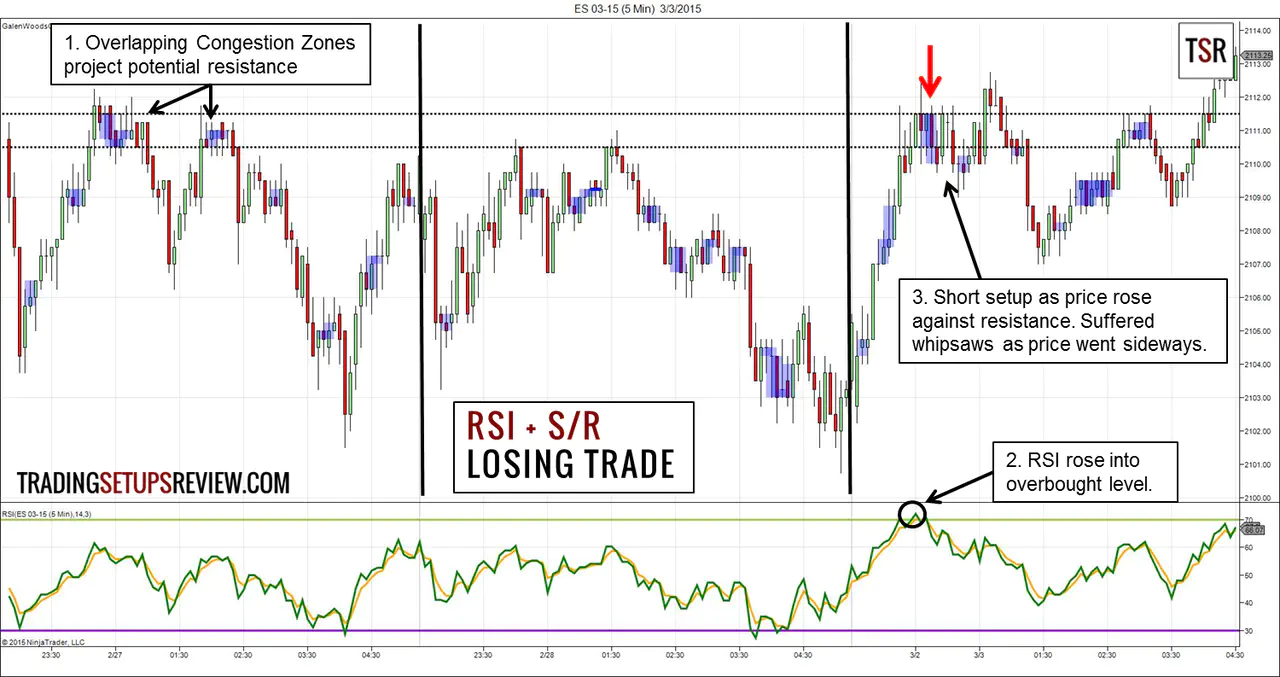How to Use the Relative Strength Indicator (RSI) for Day Trading
By Galen Woods ‐ 3 min read
The Relative Strength Indicator (RSI) is a potent day trading tool for finding intraday setups. Learn this simple strategy that targets intraday reversals.
The default RSI setting of 14 periods work well for swing traders. But many intraday traders find it lacking, because it produces infrequent trading signals.
Some traders deal with this problem by lowering their time-frame. Others lower the RSI period setting to get a more sensitive oscillator. However, these solutions produce RSI signals that are more unreliable.
Getting infrequent trades is not always a problem for day trading. That is if the few trading setups that show up are high-quality ones.
In this article, you will learn a simple method to find quality day trades.
The idea is to combine the default 14-period RSI with support/resistance zones. Our aim is to find intraday reversal setups with a high reward-to-risk ratio.
Trading Rules - Day Trading with the RSI
Long Day Trade
- 14-period RSI is below 30. (oversold)
- Price is testing a support zone.
- Buy above any bullish price bar.
Short Day Trade
- 14-period RSI is above 70. (overbought)
- Price is testing a resistance zone.
- Sell below any bearish price bar.
Examples - Day Trading with the RSI
Areas of congestion are useful for finding support and resistance zones. In the examples, I used the Congestion Zone indicator from my price action course.
(Trading sessions are separated by the black vertical lines.)
Winning Trade
This is a 10-minute chart of the popular day trading market, S&P 500 E-mini (ES).
- The congestion zone from the previous session projected a potential support zone.
- The RSI fell below 30, prompting us to look for potential trades.
- As the RSI became oversold, ES found support and printed a nice bullish inside bar. We went long a tick above it and caught the low of the trading session.
Losing Trade
The 5-minute time-frame is another common choice among day traders.
- This congestion area from two sessions ago acted as resistance in the last session.
- RSI rose above 70 and became overbought.
- This overbought signal formed as the market rose into the resistance zone. We shorted below the first bearish bar formed in the zone.
This trade did not turn out well. After some whipsaws, the market fell by a short distance. Then, it rose and broke the resistance zone for good.
In this case, the resistance zone held the market down for a period. However, the timing of this trade was not ideal.
As long as the trade risk is under control, take such losses in stride.
Review - Day Trading with the RSI
The key of this trading setup is your assessment of support and resistance zones. Take into account the market structure and focus on the higher quality trading setups.
This strategy is suitable for traders who do not want to eyeball the chart. You can mark up support and resistance zones before the start of a trading session. Then, set up alerts for RSI overbought/oversold signals. When your alerts sound off, take a closer look to assess the quality of the trading setups.
If you still prefer a more sensitive indicator, try the 2-period RSI.
Day trading need not be an affair of rapid trades. By taking fewer trades, you have more time to analyze the larger picture. This is the merit of this RSI day trading strategy.


